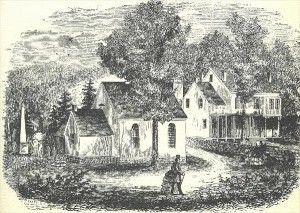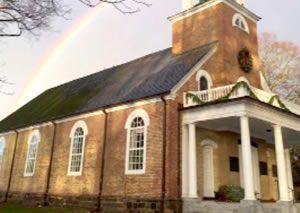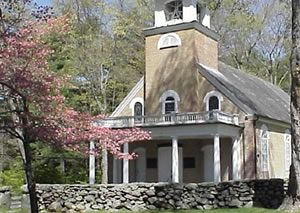Our History
When Bedford was bought from the Native Americans in 1680, the Church of England had only one settled clergyman in all the Northern Colonies – the chaplain to the garrison of New York City. Bedford, like nearly all the early New England settlements, was Puritan, and the original twenty-four settlers had moved inland from the coastal town of Stamford.
It wasn’t until 1704 that Bedford residents banded together to organize what would later become the parish of St. Matthew’s. Services were performed by the rector of the Rye Parish once every four weeks, but gatherings of the members of the parish were held regularly in either a meeting house or by traveling to what would later become North Castle. Missionaries serving the community were industrious but often short-lived, and in the years between the founding of the Bedford Church and the American Revolution, thirteen clergy had come and gone.
In 1759, Mr. St. George Talbot made a bequest of six hundred pounds “for the use of promoting true religion in North Castle and Bedford.” St. George's Church was constructed the following year to serve Northern Westchester. It was located beside where now stands the Northern Westchester Hospital. Its churchyard remains in that location. During the Revolutionary War, St. George's served as a headquarters and hospital for the patriot forces. In 1780 the Church of England officially changed its name to the Protestant Episcopal Church, and in 1803 the vestry of St. George's decided to move our Church to its present location. Forty acres of land (the Glebe) was purchased and construction began on "the Brick Church" that would lead to the consecration of St. Matthew's Episcopal Church in 1810. The rectory was built the following year.
The present Parish House was constructed in 1946 and enlarged in 1960 and 1999. It houses the church offices, library, Fellowship Room and church school classrooms. It is dedicated as a memorial to those who died in World War II and in honor of all who served.
The Churchyard, the burial ground for St. Matthew’s, was officially established in the northwest corner of the property in 1812, and has been extended several times toward the eastern edge of the glebe, bordered by Beaver Dam Creek. In 2004, a new memorial garden was built and consecrated in the Churchyard.
In 1939, Rector Arthur Ketchum had a vision for an outdoor chapel to further capture the beauty of St. Matthew's. The result was the rustic Chapel in the Woods with its rough-hewn benches and an altar made of fieldstone slab. The Chapel is used for summer services and for weddings, baptisms, and special events. Farther down the trail leading to the Chapel is the beautiful Beaver Dam Brook with a bridge to the 25-acre Ketchum Preserve which was given to the Church in 2003 by the Nature Conservancy. Along with the Parsonage Glebe, St. Matthew's owns a total of 65 acres.
The triangle of land that sits in front of the Church and Rectory was once the site of the First Particular Baptist Church. When that church was no longer in use, St. Matthew's acquired the land and in 1936 erected the Bedford Cross to invite the prayers of those who passed by.
A multi-year celebration of St. Matthew’s bicentennial was held between 2005 and 2010. It culminated in a 200th anniversary of the consecration of the sanctuary in 2010. In 2012, a Children's Chapel was built for use by the Church School and for small services.
Five miles to the south of St. Matthew's, in an area known as the Peaceable Kingdom, sits beautiful St. Mary's Church. In response to the needs of Episcopalians who desired a church closer to their homes, the little church was constructed in 1852. From its beginning , St. Mary's was served by the rector of St. Matthew's although it has its own vestry made up of neighbors. St. Mary's offers six services a year and is treasured by all.



